A coastal town 30 kilometres (18 miles) south of Barcelona that is a 40-minute train ride from central Barcelona. Sitges has it all: history, culture, architecture, shopping, bars and restaurants and beaches.

Sitges Sant Sebastian Beach
The origins of Sitges are that of a fishing village and wine trading port. The town has been much favoured by artists, the bohemian crowd and has developed a large LBGT community. Since the 1800s Sitges has been known as a tourist getaway with much more than just beaches.
Why Visit Sitges?
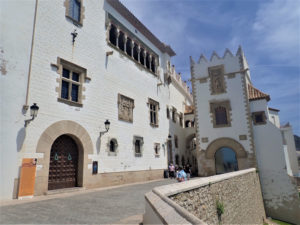
Sitges Cau Ferrat Museum
Festivals: in a beach town south of Barcelona every month there is a different festival.
Postcard beach views: of whitewashed Mediterranean houses, and over 4 kilometres of long sandy beaches, including a clothing optional beach.
Culture: Sitges is a favourite of artists, poets and painters. The headland in the middle of town has the prominent Church of Saint Bartholomew around which sit multiple museums such as Cau Ferrat, Maricel Mucseum, Maricel Palace, Stampfili Foundation as well as art galleries in the town centre.
beaches: 4 kilometres of long sandy beaches, including a clothing optional nudist beach.
LGBT Friendly: hosting the annual Gay pride Sitges festival at the beginning of June. Sitges Boulevard along the seafront is a broad boulevard full of bars and restaurants, opening till late in the evening.
Medieval Walls: Historic centre of Sitges has remains of the medieval city wall which can be viewed from the terrace of Bar La Guineu de Sitges
Hiking in Garraf Natural Park: Sitges is situated between the sea and the mountains of the Garraf Natural Park. The GR-92 coastal path passes via the Garraf park with a popular route being from Garraf to Sitges.
Artisan and Boutique shopping: in the pedestrianised Carrer Mayor Street that provide great photo opportunities.
Notable Festivals
late February/early march: Sitges Carnival is one of the oldest in Catalonia. A wild and merry atmosphere, with two main events: the street parades on Sunday and Tuesday.
Mid-March: The Barcelona to Sitges International Vintage Car Rally held yearly since 1959 hosts 60+ classic cars and 15+ motorcycles from before 1924, the majority of which belong to private collectors. The drivers and their passengers, in period dress, arrive in Sitges from Barcelona via the Garraf coastline.
23rd April: Saint George (Sant Jordi) is the patron saint of Catalonia and can be described as the Catalan Valentine’s Day with the tradition that women gift men a book and men gift roses decorated with Catalan symbols like wheat and the striped flag. Passeig de la Ribera is full of book stalls and florists.
June: This international Gay pride festival is one of the most important in the Mediterranean. Open to everyone and set among the town and its beaches, this occasion offers concerts, parades and parties by the sea.
June: Corpus Christi is a religious celebration where the streets are lined with carpets of flowers on Corpus Christi Sunday. The town’s main streets wake up covered in carpets of flowers made by the local neighbours after working tirelessly through the night. In the afternoon, the flower carpets serve as a guide for the religious procession led by giant figurines.
23rd to 24th of August: Fiesta major de Sitges is a big street party in the town held in celebration of the town’s patron saint, Sant Bartomeu (Saint Bartholomew).
Beginning of October: Sitges international film festival takes place in the Melia Sitges hotel. This is like a mini Cannes film festival and it focuses on fantasy films.
December: Sitges Christmas Market at La Fragata beach in front of Sant Bartomeu church selling arts and crafts goods, traditional Catalan Christmas goods and decorations.
Postcard views & beaches
The area around the Sant Bartomeu church is full of historic buildings that are a popular spot to photograph Sitges. From this elevated headland you can see out onto Fragata, la Ribera and Sitges beaches. From the other side of the headland there are views onto San Sebastian beach. The elevated part of town here is where the old city walls and castle could be found and there are plenty of historic buildings which nowadays house restaurants and boutique shops.
Culture
Cau Ferrat Museum & Maricel Museum: are co-joined museums that form part of the Museums of Sitges and are part of the Art Museum of Catalonia collection. Sitges was an important town at the turn of the 19th Century for artists musicians and writers. The building dates from 1893 is the former home and workshop of artist and writer Santiago Rusiñol Prats (1861-1931), one of the most important figures of the Catalan Modernist movement. Cau Ferrat consists of a ground floor living quarters consisting of a kitchen, study, bedroom, reception and hallway.
The staircase goes up to the first-floor main hall which is a huge open space with high vaulted ceiling supported by wooden beams. It is reminiscent of a church or large council meeting room and contains a vast collection of Art. The Maricel Museum is a broad collection of art dating from the tenth century to realism and figuration during the first half of the twentieth century. The collection is formed largly by a donation from Dr Jesús Pérez-Rosales. My favourite part of this museum is the blue ground floor with ornate tiled indoor fountain with sea views.
Maricel Palace: is an emblematic early 20th century palace in Sitges. Built by Miquel Utrillo i Morlius between 1913 and 1918 as a home and place to display the important art collection belonging to American millionaire industrialist, collector and patron of the arts, Charles Deering, who lived there until 1921. The palace consists of The Gold Room, the Blue Room, the Chapel Room, the Ship’s Room, Terraces and the Cloister, each space with a distinctive decor. The palace as well as being a museum also serves as a cultural centre, conference and seminar space, and events venue for hire.
My favourite part of the palace is the roof terrace fountain area with sea views and tiled walls depicting historic hunting scenes from the countryside around Sitges. Note that Maricel Palace has limited opening hours on Sundays.
Stämpfli foundation: is an art gallery and museum founded by Peter Stämpfli, a Swiss artist, who has made Sitges his home and the location for an art gallery and museum of his work and other important pop art modernist painting and sculptures. The Gallery is located in a beautiful brick modernist building that was the former fish market of Sitges located behind the picturesque town hall building.
Honourable mentions
Sitges is a town that I visit at least once a year and always discover something new to see and do. Equally one train stop further from Sitges is the beach town of Vilanova I la Geltrú where next to the station is the Catalona Railway museum. In former steam locomotive sheds are a collection of vintage trains from the age of steam to Art Deco diesel electric machines. The museum is a child friendly atmosphere and is the ideal morning activity before a day at the beach.
Sport in Sitges
At the edge of Sitges historic centre is a littoral zone of modern hotels terminating at Club de Golf Terramar and hotel complex. In this zone you will find a water sports rental school where you can rent Sea kayaks, windsurfing boars and paddle boards to explore the wild coastline between Sitges and Vilanova.
To plan your perfect Sitges visit check out my Sitges page where you can find a beach guide, restaurant guide, individual blogs for each attraction, maps, train maps, extensive photo galleries, top tips, events listings and weather info.

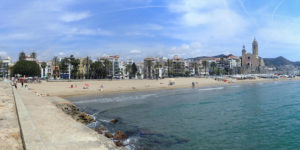
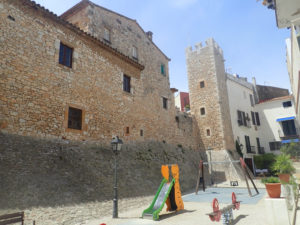
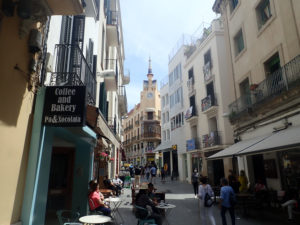
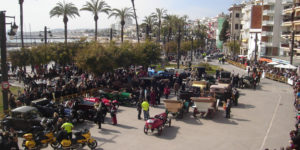
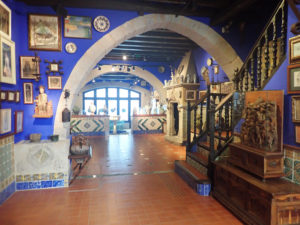

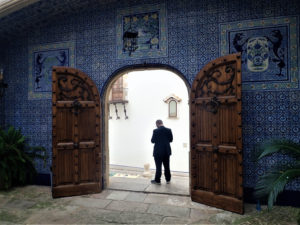
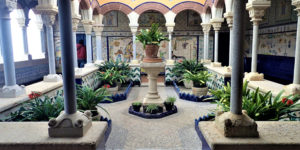







Leave a Reply